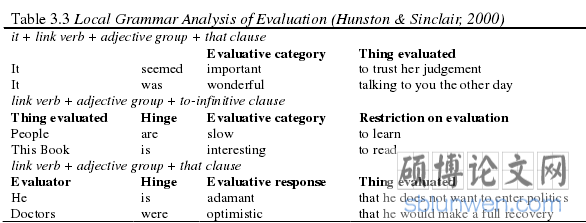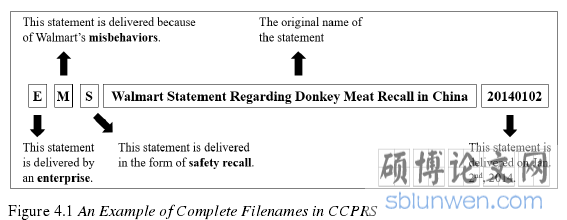Chapter One Introduction
1.1 Research Background
The famous remark made by Charles Dickens in A Tale of Two Cities (1859: 1), ―it was the best of times, it was the worst of times…‖ can also be applied to describe the living environment of current organizations. Nowadays, information technology is developing at an unprecedented rate and is influencing every aspect of our life. Almost everyone plays an increasingly important role in the process of creating information and sharing information. This phenomenon can be a good thing for someone as we can see more and more web celebrities or organizations earn large amount of money by sharing all kinds of information. At the same time, it can also be a bad news for someone or some organizations as we know that many celebrities or big companies failed overnight because of the spreading of information unfavorable to them.
Under such circumstances with fiercer competition and more comprehensive oversight, it is unavoidable for all the organizations to be involved in the activities of public relation management. As an important means of public relation management, crisis public relation statements (CPRS hereinafter) are formal written announcement which can be issued by any kind of media to the public when a crisis occurs (Jiang, 2012: 26). CPRS generally include two parts: the description of the event and the reaction to the event. In the former part, the course of event or background information may be offered. In the latter part, the following content may be included, such as clarifying truth, promising to take measures, defining position, showing gratitude and so on. By delivering CPRS, the subjects of the statements can not only apologize to the (potential) victims and comfort them to a certain degree, but also protect the subjects‘ reputation and prevent the situation from getting worse.
.......................
1.2 Research Motivation and Objectives
This study aims to explore commissive utterances features (distribution features and linguistic features) in CPRS. More specifically, this study tries to figure out commissive utterances features from the following four aspects.
(1) In order to explore the distribution features of commissive utterances, the frequency of commissive instances occurring in the opening part, in the middle part and in the concluding part are compared among different classifications of CPRS..
(2) Commissive patterns frequently used in the commissive instances (extracted from Corpus of Crisis Public Relation Statement) are summarized and described with the purpose of figuring out the linguistic features of commissive utterances.
(3) The frequency of different commissive patterns in different types of CPRS is compared to find out the pattern preference in different types of CPRS.
(4) The frequency of different commissive patterns used in various content of promise is compared, aiming to find out the pattern preference in varied content of promise.
....................
Chapter Two Literature Review
2.1 Crisis Public Relation Statements (CPRS)
When we search the phrase ―crisis public relation‖ in the Chinese National Knowledge Infrastructure (CNKI), we can get more than 20,000 search results effortlessly and more than 100 related articles are released each year since 2003. This phenomenon shows that ―crisis public relation‖ is a hot topic these days and it also demonstrates that, to some extent, methods of dealing with ―crisis public relation‖ are in large demand.
2.1.1 Definition of Crisis Public Relation Statements
Before starting this study, first, we should have a good understanding of the definition of ―crisis public relation statement‖. This phrase includes three important elements: ―crisis‖, ―public relation‖ and ―statement‖. Then we will figure out the meaning of each element one by one.
The word ―crisis‖ (Collins, 2019) refers to a situation in which something or someone is affected by one or more very serious problems. But this only means that the situation is very urgent and the stage is extremely crucial rather than that the situation is necessary to bring negative changes. In other words, ―crisis‖ can be a turning point for a sudden change, no matter for better or worse. Here, in this study, ―crisis‖ is mostly used to refer to the situation in which an organization is affected by serious problems, either internal or external.
The definition of ―public relation‖ varies from book to book because the writers would like to elaborate the phrase from different perspectives. Some writers believe that ―public relation‖ is a kind of management function or spreading function. Edward Bernays (1928: 1) defined ―public relation‖ with these words ―a management function, which tabulates public attitudes, defines the policies, procedures and interests of an organization followed by executing a program of act to earn public understanding and acceptance‖. Some writers deem ―public relation‖ to be a general concept of public and social relations. There are also some writers regarding ―public relation‖ as a kind of social science serving organizations and public interests (Yang, 2005). No matter what views they hold, they have all noticed three basic elements of pubic relation — social organization, the public and communication. In layman‘s terms, ―public relation‖ can be described as a process that social organizations try to deal with the relationships or other business with the public through dissemination of information or communication. Here, the aim of this process is to promote the development of social organizations and also guarantee two parties‘ interest.
.......................
2.2 Commissive Utterances
As an important part of CPRS, commissive utterances can help to maintain listeners‘ interest, thus can ease the tension between pledge makers and listeners. As a result, the impact of crisis can be reduced effectively.
2.2.1 Definition of Commissive Utterances
Before defining the term ―commissve utterances‖, it is necessary to study the term ―commissive‖ itself. ―Commissive‖, is the representative of Speech Act Theory — Austin had given a very simple but comprehensive definition: ―the whole point of a commissive is to commit the speaker to a certain course of action‖ (Austin, 1962: 156). Here we can try to conclude the definition of ―commissve utterances‖ by combining the definition of ―utterances‖ together with ―commissive‖ — a stretch of language that speakers use to promise a certain kind of action.
After talking about the definition of ―commissve utterances‖, example (1) is here for better understanding this term and in this example, we will distinguish two similar concepts.
(1) Consumers are encouraged to return the affected products to the nearest IKEA store for a full refund, proof of purchase is not required.
This example is excerpted from IKEA‘s statement on July 6th, 2016 and it can be used to differentiate two terms: ―commissive utterances‖ and ―content of promise‖. Firstly, ―content of promise‖ is an important part of ―commissive utterances‖. A complete commissive utterance may include a ―promiser‖ (the subject who gives a promise), a ―promise‖ (the receiver of a promise), ―promising‖ (the behavior of giving a promise), ―content of promise‖ and so on. Secondly, in many statements, ―promiser‖ and ―promisee‖ are omitted in the case where these identities are self-evident. Under this circumstance, ―content of promise‖ is the only left part of commissive utterances. In example (1), this statement is given on IKEA‘s official website and the purpose of this statement is to apologize to the public because something wrong happened to IKEA‘s product. In this commissive instance, we can easily know the ―promiser‖ is IKEA and the ―promisee‖ is the reader of this statement though all the information about identity is omitted. Example (1) omits other components of commissive utterances and only leaves ―content of promise‖ behind.

...............................
Chapter Three Theoretical Framework .................... 11
3.1 An Overview of Local Grammar ............................ 11
3.2 Features of Local Grammar ................................. 14
Chapter Four Research Methodology .......................... 20
4.1 Corpus of Crisis Public Relation Statements (CCPRS) .................. 20
4.2 Tools Used in the Research .................................. 22
Chapter Five Results and Discussion .................................... 27
5.1 Distribution Features of Commissive Utterances in CPRS ......................................... 27
5.2 Linguistic Features of Commissive Utterances in CPRS ............................................ 32
Chapter Five Results and Discussion
5.1 Distribution Features of Commissive Utterances in CPRS
As mentioned in section 4.2.1, according to different standards of classification, CPRS can be divided into different groups. In terms of promisers, CPRS can be placed in two classes: those from international enterprises (E) and those from governments or other non-profit international organizations (G). In terms of the type of incidents, CPRS can be segmented into statements for emergencies (E), statements for false information (F) and statements for misbehaviors (M). Seeing from the form, CPRS can be classified into reports on the incident (R), emergency notices (E), safety recalls (S), speeches on defining position (P) and statements on responding to public voice (V). In current research, the locations of commissive utterances are studied to figure out their distribution features. The frequency of locations in the opening part, the middle part and the concluding part is compared among different groups of CPRS.
As for the standards for distinguishing the opening part, the middle part and the concluding part, three judgment rules are applied here. First, sub-titles or some discourse markers, such as ―at the very beginning‖, ―at last‖, ―finally‖ are main clues to divide texts. Second, paragraph division or even sentence division (if the text is too short) in the source text is another criterion. Third, change of main idea is also an indicator. In general, the opening part mainly includes the background information of statements, greeting words; the middle part usually discusses the reason of incidents, the addressor‘s opinion about the incident and corresponding plan; contact information, another greeting, future plan and so on will be covered in the concluding part. Commissive utterances may appear in any part mentioned above with different functions.

........................
Conclusion
6.1 Major Findings
In this study, a micro corpus of crisis public relation statements (CCPRS) was built. Distribution features and linguistic features of commissive utterances are studied based on the CCPRS employing both quantitative approach and qualitative approach. In this process, CPRS are further classified according to the promisers, causes and forms. Comparative analysis among these classifications is conducted. In addition, pattern choices of commissive instances are also compared in line with the content of promise. The major findings of this study will be summarized based on the research questions raised in section 4.3.
First, findings about distribution features in the CCPRS will be concluded. Here, frequency of commissive instances at different locations (in the opening part, in the middle part and in the concluding part) is compared. Results of study show that more than one commissive instance is usually given in the middle part or the concluding part while commissive instances can hardly occur once in the opening part. Compared with statements by enterprises, this phenomenon is even more obvious in the statements by governments or non-profit organizations. Causes of statements also have an effect on the location preference of CPRS. In this study, causes of statements are divided into three types: emergency, false information and misbehaviors. The middle part and the concluding part are two preferred locations for statements for all three causes. At the same time, statements for false information and statements for misbehaviors rarely promise in the opening part. Different forms of statements also show preference for different locations. Reports on the incident and speeches on defining position tend to give promises in the middle part; emergency notices are likely to give promises in the concluding part and safety recalls and statements on responding to public voice prefer to promise both in the middle part and concluding part.
reference(omitted)
